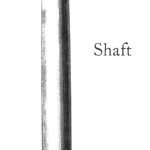We may receive a commission when you use our affiliate links. However, this does not impact our recommendations.

I had a girlfriend in high school who had two unusual characteristics. Lynette was a drama major (not a recommended trait in girlfriends) and her father owned a sweet-looking MG convertible. Whenever I would go to her house for dinner, her father would be under the hood of the vehicle, wrench in hand, until the fried okra hit the dinner table.
The MG was always in need of something, and Lynette’s dad had to do it himself. This was, after all, Arkansas. And anything that wasn’t built in Detroit elicited stares from the townsfolk.
This week, I’m beginning to get the same feeling about the English-style workbench I’m finishing up in the shop. Except for a detail or two, the bench is built. (The photo above was taken before I added the shelf below the top.) But I’m finding that , like its British four-banger brethren , the bench is a bit needy.
For example, I flattened the top last week, but it’s a bit out of true this week. So I flattened it again. I’m also wondering if the top is stiff enough to withstand heavy planing. The top is 1-1/2″ thick and supported by bearers beneath, but it still has an almost imperceptible springy feel that gives me pause. Will it make a difference in my day-to-day work? I don’t know. But I am going to add a couple more ribs on the underside of the top to see if I can stiffen things up.
Perhaps the problem here is that I’m comparing this bench to the Roubo-style French bench I built in 2005. The top to that bench is almost 4″ thick and is unyielding to all punishment. But that bench took twice as long to build and required three times the material.
Clearly, I need to take the English bench for more of a test drive.
As I’ve begun breaking in the bench by working on it, I have found some things about it that are quite nice. The angled leg vise is fantastic. The large front apron is an excellent means of supporting long and wide work with little effort. And I’ve actually been clamping stuff to the benchtop without too much trouble at its ends.
Bottom line: I go through this process with all projects. I start with great optimism as I begin a project. After a series of highs and lows, I complete the project. I stand back, take a look and focus on its flaws, the project’s frustrations and my mistakes. Then, after I put the project into use, I mellow. The flaws fade and I’m able to see the project for what it is , somewhere between the optimism and the despair.
I hope this is also true with the bench. It sure didn’t happen with Lynette (or her dad’s MG). He sold the green convertible and Lynette dumped me for one of the officers of the drama club.
Here are some supplies and tools we find essential in our everyday work around the shop. We may receive a commission from sales referred by our links; however, we have carefully selected these products for their usefulness and quality.








I’m watching your commentary on this one quite carefully: I’m planning to build a bench this year or next and have wondered about torsion boxes instead of slabs. Also, could you post a picture of the hinge at the bottom of that leg vise?
Thanks!
Jamey,
You might be correct. It might be the softness of the wood that’s a fooler here. It probably is stiff enough, all-in-all, but I’ll probably shore it up anyway. After building a Roubo bench, I’m a fan of overkill.
Jamey,
This morning I went in and pounded pretty hard on the top in the center. It seemed quite stout. More so than I thought at the end of the day yesterday.
Certainly maple would be fantastic. But yellow pine is actually slightly stiffer, according to the numbers in Bruce Hoadley’s book "Understanding Wood."
The Stiffness of Common Woods
Species E value
Hemlock, eastern 1.20
Chestnut 1.23
White pine 1.24
Sycamore 1.42
Basswood 1.46
American cherry 1.49
Hemlock, western 1.49
Red oak (Northern) 1.49
Poplar 1.58
European beech 1.63
Red (soft) maple 1.64
Black walnut 1.68
American beech 1.72
Ash 1.77
White oak 1.78
Hard maple 1.83
Southern yellow pine 1.93
Douglas fir 1.95
Yellow birch 2.01
Hickory, shagbark 2.16
It certainly has a certain charm about it. Like Joel said, the angled vise is pretty cool. I like the void between the angled legs. The angled legs also seem they would add a certain resistence to movement given the light weight. As well, I often end up standing directly against the bench for certain things and the clear span seems nice. Well, speaking of the void under the bench, seems clean up would be great.
Looking forward to your thoughts in a few months…Take care, Mike
That angled vise is tres cool
Happy New Year!